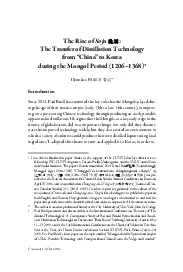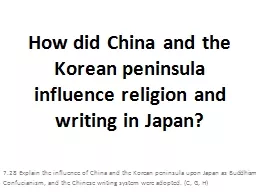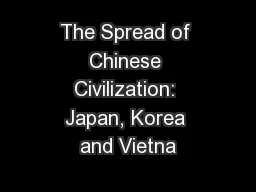PDF-The Transfer of Distillation Technology from China to Korea Hyunhee P
Author : wilson | Published Date : 2021-08-25
Hyunhee develop a case study that illustrates what happened with distillation technology in Korea during Mongol timesMany individual pieces of evidence hint at the
Presentation Embed Code
Download Presentation
Download Presentation The PPT/PDF document "The Transfer of Distillation Technology ..." is the property of its rightful owner. Permission is granted to download and print the materials on this website for personal, non-commercial use only, and to display it on your personal computer provided you do not modify the materials and that you retain all copyright notices contained in the materials. By downloading content from our website, you accept the terms of this agreement.
The Transfer of Distillation Technology from China to Korea Hyunhee P: Transcript
Download Rules Of Document
"The Transfer of Distillation Technology from China to Korea Hyunhee P"The content belongs to its owner. You may download and print it for personal use, without modification, and keep all copyright notices. By downloading, you agree to these terms.
Related Documents














